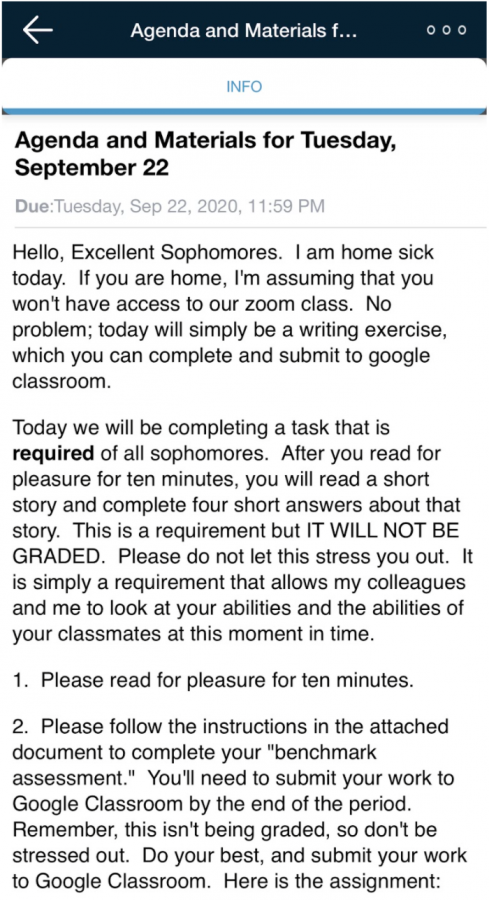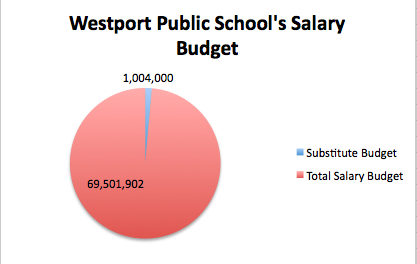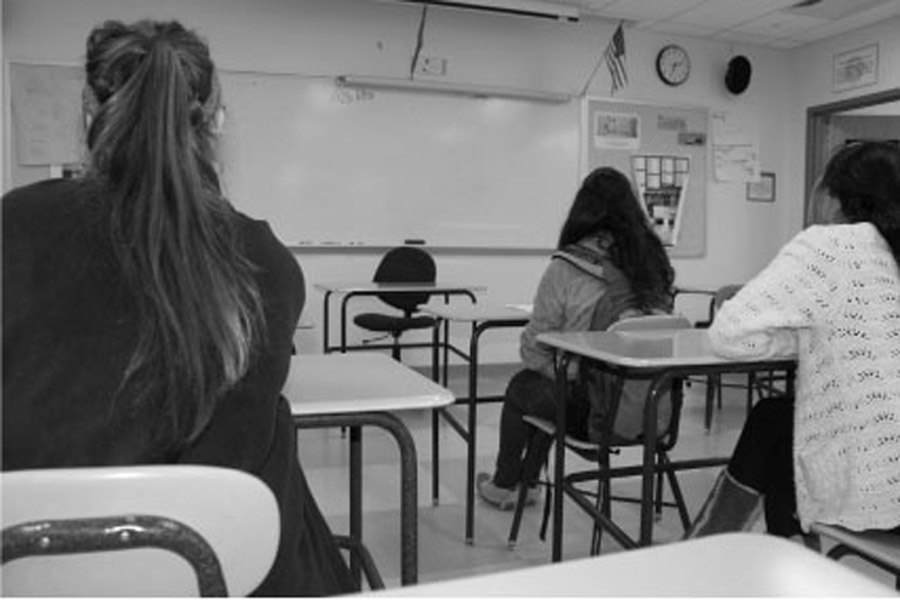Cancelled Zoom calls due to substitute teachers heightens confusion
Photo by Alexandra Glickman ’23
An absent teacher publishes an informative Schoology post making students aware of a substitute for the day.
Given Staples’ new hybrid learning model, where half of a class attends school while the other half participates virtually, having a substitute teacher can become a confusing and stressful process for those participating online.
Approximately three weeks into school, I have already experienced having substitutes, both in the classroom and at home. The initial thought behind a substitute teacher is that the class period will essentially be another free period, which sparks excitement. While I was overwhelmed with this thrill in the beginning, I quickly realized the negative long term effects that this lack of teaching could have on me as a student, especially since students don’t see their teachers as often as they did pre-COVID.
Zoom meetings are provided for all classes, except when a teacher is absent and a substitute is present. When there is not a Zoom meeting, students are deprived of communication with fellow classmates and the substitute to clarify questions and participate in the lesson. This can lead to confusion for a student and potential falling behind in class.
When there is not a Zoom meeting, students are deprived of communication with fellow classmates and the substitute to clarify questions and participate in the lesson.
The most logical solution to this issue would be to train the substitutes to start a Zoom, possibly in the form of a meeting that gathers all substitute teachers and teaches them how to open a Zoom link and accept students into a meeting. This way, the online students wouldn’t feel like they have a disadvantage when a teacher is absent. Furthermore, this simple lesson will drastically change the experience for virtual learners because now, students have a teacher present at all times.
As time progresses, it is inevitable that more teachers will be absent. Like any other year, illnesses such as the common cold, the flu, strep throat and other personal factors will come up throughout teachers’ lives, and thus, an alternative plan for absences is necessary.
My first experience with a hybrid substitute this year occurred on the third day of school. I was at home patiently waiting for my Zoom class to start, and after five minutes had passed, I began to worry. Had my teacher forgotten about me? What was happening in class? Where was my teacher?
Filled with fear, I texted my fellow classmate, who was also in Zoom Land that day. When they responded telling me that they had also not been accepted into the Zoom call either, we began to question whether a meeting had even been started at all.
We figured out a way to contact an in-class student, and she finally confirmed that there wouldn’t be a Zoom today because there was a substitute. The stress left my body, but part of me remained disappointed that 20 minutes of class time had been wasted trying to figure out how to attend class, when I could have been working on an assignment.
The lack of communication between teachers and students could have easily been prevented by an email or Schoology post notifying the at-home students of the situation for that day.
An even greater concern regarding substitute teachers is the fact that they are not able to expand upon class information if there isn’t a Zoom class. In-class students are usually able to interact with their fellow classmates and connect with the substitute if they have any clarification questions. Depriving the online students of a Zoom class takes away most of the helpful outlets that in school students enjoy from a teacher.

Staff writer Alexandra Glickman ’23 expresses her love for creative arts - both dancing and writing.
“I’m a competitive dancer,” Glickman...




























































